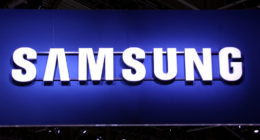Microsoft is taking a page out of Facebook and WhatsApp’s books with the launch of a new Communities feature, intended to bring users together to let them connect, collaborate, share, and plan more seamlessly. By bringing Communities to both Android and iOS devices, the tech giant is making it easier for users to form and organize groups and connect with other communities around them.
The feature is rolling out in the free version of MS Teams, which means that groups and communities can be organized and created at no extra cost. With Communities, users will have access to a space where they, as groups, can share ideas, organize events, share photos and do more.
At the time of the launch, it will be available on mobile only, and in time, will arrive on desktop. To create a new Community, users with a Microsoft account can find the feature in the Home tab within the Teams mobile app. Once they are there, they need to select “Create new community” and then “Create from scratch.” Then they need to choose a name, description, and set of guidelines for the community, as well as an emoji or a picture for it. Once they are members of a Community, they can invite others to the group by sending a link or showing a QR code.
In case the invitation link is accidentally shared with people they do not want to invite, or abused, admins can change the invite link to manage who is joining their community. Admins will have the power to manage settings, set the guidelines for the community, and moderate content – which will be a challenge on its own – shared with the users by adding or removing participants and posts (as necessary).
If you are a part of a Community, then you can easily post messages to everyone in the group – something that will be useful in case of public announcements. They can also share and store documents dedicated to group activity, and filter content for quick access to photos, videos, events, and links.
Communities also come with a “new events experience” for the organization of virtual, hybrid, and in-person events alike. Here, users can easily organize and add events to a shared community calendar. They can also invite guests, track attendance, and chat with attendees through direct private messages. For in-person events, they can add locations, provide directions with a virtual map, and add dial-in details and a joining link for virtual events. Other features such as an event cover image, together mode, and screen sharing further aid in the seamless organization and hosting of events. Next year, Teams will launch SignUpGenius, so that users will be able to better coordinate fundraisers, plan events, enlist volunteers, and more on its platform.
This feature, in theory, is perfect for groups between co-workers, event-planning committees, sports clubs, small businesses, and the like. If the Communities feature turns out to be a successful one, then it will help Teams grow beyond a platform that allows for collaboration and productivity in the workplace, and add to the 270 million monthly active users it reported in January. Additionally, it will enable Teams to provide a greater degree of competition to platforms such as Facebook, Discord (which Microsoft tried to acquire last year), Twitter, WhatsApp, and Slack.





